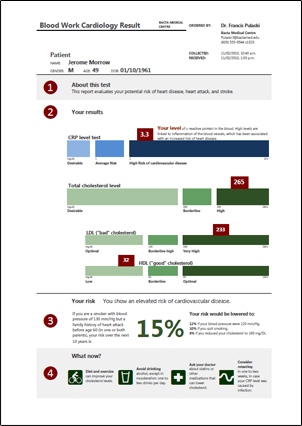
There has been a lot of buzz surrounding EMR and EHR software since the HITECH Act (Health Information Technology for Economic and Clinical Health Act) legislation was created in 2009. The act is designed to stimulate the adoption of electronic health records (EHR) and support technology in the United States. Under this act, healthcare providers receive financial incentives for demonstrating a meaningful use case scenario, and rollout, of EHR programs through the end of 2015. After this year, penalties may be levied for failing to realize those use cases.
EMRs describe the records of an individual that is created, gathered, managed, and consulted by licensed clinicians and staff from a single organization who are involved in the individual's care process.[1]
EHRs are the aggregated electronic records of health-related information on an individual that is created and gathered cumulatively across more than one health care organization.[1]
This act, that went into effect last year in 2014, resulted in a mass migration from paper to electronic records. At the end of 2013, nearly 40% of physicians have implemented a basic electronic health records software.[2]
A survey by Black Book[3] lists potential reasons why many medical providers consider switching their EHR system:
- The solution does not meet the needs of the individual practice - 80%
- The practice did not adequately assess their needs before selecting the original EHR - 79%
- Design of solution is not suited for this practice specialty / specialties - 77%
This shows the enormous potential for software vendors in this market when listening to the requirements of users. According to Capterra[4], the five most requested features of EHR systems are:
- Billing system integration
- Automatic reminders
- e-prescribing
- Document scanning
- Medication tracking
The number one request is billing system integration and TX Text Control is often a core component in EHR systems that is used to generate the invoices and billing paperwork. TX Barcode is used to generate barcodes to track medications in medication tracking software modules or for medication robots.
Deeply Integrated Speech Recognition Support
Physicians don't want to document in EHRs by pointing and clicking or typing, so they use speech recognition or some combination of methods.[5]
For many years, our partner, Nuance has supported TX Text Control in many products of the Dragon Speech Recognition family from end-user products or SDKs to specific medical solutions like SpeechMagic.
Since 2014, M*Modal also partnered with Text Control and works closely together with Text Control engineering to integrate native TX Text Control support to their engine and products.
Customizable Letters and Medical Transcription
Some of the most important features of all EHR and EMR systems are the generation of customizable letters, medical reports and medical transcription. Patient data is automatically populated onto a predefined template to complete clinical documentation easily. TX Text Control provides an MS Word inspired interface for Windows and cross-browser, cross-platform document editing and template creation. Mail merge and reporting processes can be directly integrated into EHR systems.
Summary
The products from Text Control are used in the majority of leading healthcare EHR and EMR systems and provide the perfect tool-set for the specific requirements.
References
[1] Houston Neal, November 2008: EHR vs EMR - What's the Difference? (http://profitable-practice.softwareadvice.com/ehr-vs-emr-whats-the-difference/)
[2] Catherine M. DesRoches, June 2013: Meeting Meaningful Use Criteria and Managing Patient Populations: A National Survey of Practicing Physicians (http://annals.org/article.aspx?articleid=1692572)
[3] Douglas Brown, February 2013: Electronic Health Record sellers face make-or-break year of client ultimatums and revolts, reveals 2013 Black Book survey (http://www.prweb.com/releases/2013/2/prweb10416655.htm)
[4] Jordan Barrish, July 2013: Top 20 Most Popular Electronic Health Record Software Solutions (http://blog.capterra.com/top-20-most-popular-electronic-health-record-software-solutions/)
[5] Ken Terry, February 2013: Speech Recognition Booms As EHR Adoption Grows (http://www.informationweek.com/healthcare/electronic-health-records/speech-recognition-booms-as-ehr-adoption-grows/d/d-id/1108842?)

